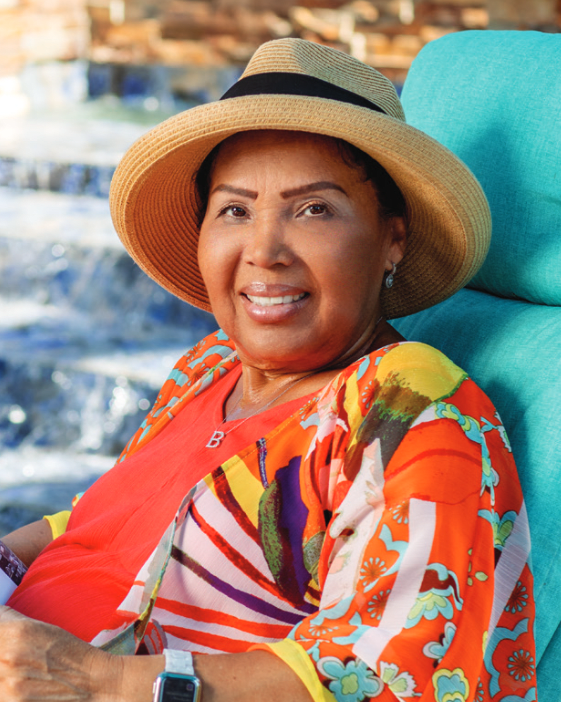
Belsi Gillespie is living life to the fullest. The 65-year-old Santa Clarita Valley resident takes her health and self-care seriously, eating highly nutritious foods and enjoying spa visits, her yoga practice and travel—especially to her family home in Guatemala. She loves gardening in her backyard, where she hangs out with friends, hosts birthday parties and throws family picnics. Her greatest joy is watching her 13-year-old grandson, Aidan, toss a baseball while she sips a glass of wine.
The fact that Belsi is so happy and healthy today may seem like a miracle to those who know her recent history. Three years ago, she doubled over in pain while having dinner at a restaurant. She was rushed to Providence Holy Cross Medical Center, where, after a whirlwind round of tests and exams, she received a diagnosis that understandably strikes fear in the hearts of most people: pancreatic cancer. Luckily, she found herself in the hands of Ali Cheaito, MD, a hepatobiliary and pancreatic surgeon at Providence Holy Cross with extensive experience in advanced robotic surgery.
Belsi’s first step was undergoing an extensive evaluation to rule out Stage 4, or metastatic, cancer, which can’t be treated surgically. “Only about 25 percent of pancreatic cancer patients qualify for surgical treatment,” says Dr. Cheaito. Luckily, Belsi did qualify, but first she needed to be cleared by a multidisciplinary team that included other doctors, including her primary care physician, an oncologist and tumor board members, to make sure she was physically able to withstand the extensive surgery that would be required. Known as the Whipple procedure, this complex surgery involves removing the head of the pancreas, the first part of the small intestine, the gall bladder, the bile duct and—in Belsi’s case—part of the stomach.
A SURGEON’S HIGH-TECH TOOL
“Once we got in there, it was clear that she wasn’t at Stage 4 and she was strong enough physically to tolerate the procedure, so we went ahead with it using the da Vinci robot,” Dr. Cheaito says. The benefits of using the da Vinci robot when compared to traditional open surgery include smaller incisions, greater precision, less pain and blood loss, fewer infections or other complications, a shorter hospital stay and a faster recovery. Most importantly, success rates in terms of removing the cancer are equal to those of traditional surgery. “The most complicated part of the robotic surgery is putting the organs and tissues back together in a way that helps restore normal digestive tract function,” Dr. Cheaito says. “But most patients are back to their normal activities in about two weeks.”
After recovering from the five-hour surgery, Belsi, whose cancer turned out to be Stage 3, underwent a course of chemotherapy as a precaution in case any cancer cells remained. Today, she is living her best life and doesn’t take her health for granted. She hopes that other pancreatic cancer patients will have the same chance to enjoy a full recovery as she has. “Every night, I say a prayer for Dr. Cheaito’s hands,” Belsi says.
Dr. Cheaito gives credit to the multidisciplinary cancer care team at Providence Holy Cross that helped ensure her successful treatment. “The surgeons and the advanced tools that we use are just one part of that team,” he explains. “It takes a tribe.”
Contributing Physician
Ali M. Cheaito, M.D. is a general surgeon at Providence Holy Cross Medical Center in Mission Hills, California. He is fellowship-trained in hepatobiliary and pancreatic surgery.
















